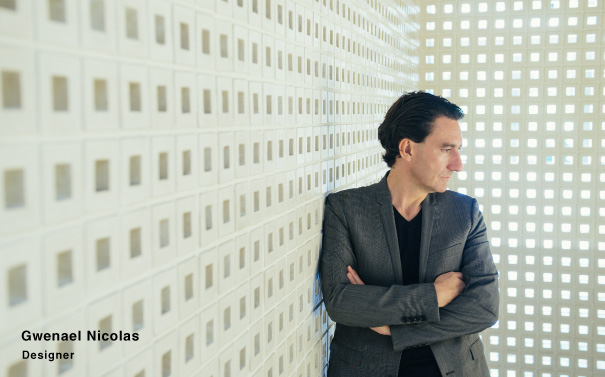
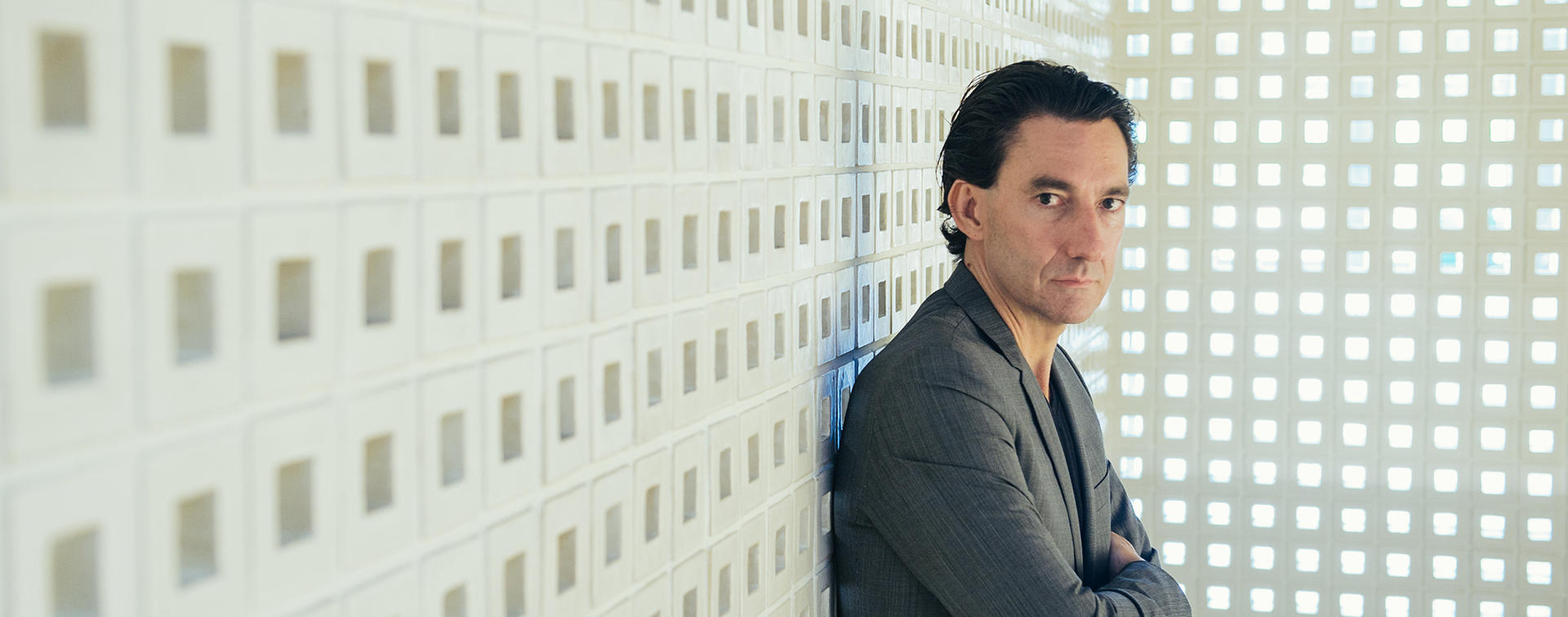
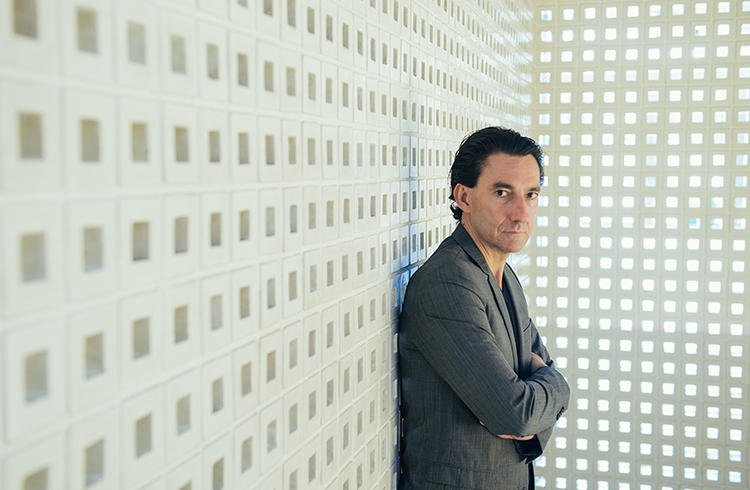
Japanese sensibilitiese and the future of design
A facility where tourists can get taste of the future
Working in the genres of graphics, products, store interior and architecture, Gwenael Nicolas has designed for numerous companies ranging from mass-producing clothing retailer Uniqlo to luxury brands such as Louis Vuitton. Nicolas came to Japan more than 20 years ago and says that Tokyo is his favorite city. In this interview, we asked him about his thoughts on Japan and the future of design. The photos of Nicolas were taken at Toraya Tokyo Midtown. Nicolas was among the creators who participated in the exhibition held at Toraya called "Yokan of the Future." Note: the text below is not a transcript but a translation of the interview held in Japanese.
Things are constantly being created in Roppongi
The strange thing about Roppongi is that it's a completely new area that was created right in the middle of Tokyo. You wouldn't find such a place in Paris or New York or Shanghai or anywhere else in the world. And in addition to its commercial spaces, Roppongi has its residential areas. And it has lots of shops, as well as parks and museums. Usually, towns get bigger from the peripheries, but with Roppongi, it's as if Tokyo experienced another expansion from its center.
Of course, when I came to Japan in 1991, there wasn't much in Roppongi, and it had an image of being a place of nightclubs. But then before we knew it, Roppongi Hills was built, and a few years later Tokyo Midtown was built. When you think of Roppongi, you ask yourself, "Where exactly is it?" It's a place that doesn't seem to have anything, but things are constantly being created here.
The streets look nicer compared to the past, but personally, I feel that Roppongi shouldn't be turned into an area that is easy to understand. I mean, Roppongi Hills is confusing, isn't it? When I first went, I got lost even with a map in hand, but over a period of 10 years, I gradually came to know almost all its parts, and now Roppongi Hills has become my place. Nowadays, there's a tendency to make everything accessible, so it's more fun to get lost in the streets. I think a town is more intriguing when it's like a maze.

"Yokan of the Future" exhibition
Exhibition showing innovative forms of yokan - a thick jelly made from sweet bean paste. Creators Gwenael Nicolas, and Reiko Sudo, and Yoshie Watanabe were invited to present new interpretations for the traditional Japanese sweet. A limited edition of the three types of yokan, including Nicolas's "SUEHIROGARI", was sold at Toraya in Tokyo Midtown until Aug. 3, 2015.
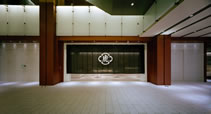
Toraya Tokyo Midtown
This branch of the Toraya confectionary store opened its store and café in March 2007. The art direction of the establishment was undertaken by Kaoru Kasai, and the architectural design by Hiroshi Naito. The store sells Japanese confectionary, tea, tableware and other items selected by Toraya. At the adjacent gallery, various exhibitions are held themed on Japanese lifestyle and culture.
A dynamic and convenient city
When I say that my favorite city is Tokyo, people often ask me why. The reason is that things are always moving here. When I return to Tokyo from a business trip, I often notice that a street somewhere has changed. I suppose there are people who don't like that kind of change, but I find it very interesting.
In Paris for example, things are very set. It's like "This is the area for living and this is the area for playing, and that is the area to visit now and again." And that is that. A visitor who is new to Paris can get a fairly good understanding of the city by going sightseeing once or twice. But in Tokyo, the places people visit are different according to their own individual tastes, and everyone is hopping about from once place to another. I suppose it's tough for tourists since Tokyo is such a huge, sprawling city and there are no main, symbolic areas.
Cities that are uninteresting have to make an effort, but Tokyo doesn't need to make an effort because things are always happening here and it's the most dynamic city in the world. You don't have to be active, because there's always activity in the streets which energizes you. And Tokyo is so convenient - it has everything. Maybe the downside is that Tokyo makes you a lazy person.
Five to ten years ahead of the rest of the world
I also think that Tokyo is a city without trends. To be more precise, it does have trends but the trends are small ones made by about 30 people. Sometimes in Japan, you come across tiny restaurant-bars where only a few plates are served. For the proprietors of these establishments, communication with their clients is more important than doing business. You wouldn't find such establishments in Paris or New York.
In other countries now, the bulk of communication is being carried out on digital media such as Facebook and Twitter. The digital world exists in Japan too of course, but the Japanese place value on communicating, and taking action in the real world like going to restaurants. When you think about the next thing that will come after Facebook and Twitter, you realize that ultimately, it's about communication between people. I think the next thing would be more personal than the current SNS; it would probably be more of a one-on-one communication among people who share the same hobbies or interests - like the exchange between pen friends in the old days.
Another post-SNS thing would be to set up small restaurants of the kind I mentioned earlier. In Japan, the digital age is over, and communication has already become post-digital. I think Japan is about five to ten years ahead of other countries, a trend that is clear when you look at the history of cell phones.

The importance of the "design of time"
Designing the shape of things is important but I feel that designing time is even more important. There is time that passes very slowly and time that goes by very quickly, and there is power in both. An example of slow time is a work called "Backside of the Moon" by James Turrell in Minamidera on Naoshima island.; it's a pitch black room that gradually becomes visible. In contrast, fireworks are about the design of fast time. There is slow and fast time in clothes as well. Uniqlo is about "fast retailing" while on the other hand, luxury brands take time in selling their products, creating stories.
For the "Yokan of the Future" exhibition at the Toraya Midtown store, I designed a product called "SUEHIROGARI." Yokan is a traditional Japanese dessert which is difficult for foreigners to understand. They wonder whether it should be eaten with a spoon or a fork, whether it should be cut, what kind of plate it should be served on and what kind of tea goes with it. There are rather high obstacles that have to be overcome before you start eating it, so the theme of the exhibition was presenting the yokan as a fast product - not in a bad way of course. It's necessary to take such steps to lower the obstacles in order to export Japanese culture. So I designed yokan that doesn't need to be cut but can be eaten immediately after the package is opened. And because each piece is shaped like a fan, people can see at a glance that it's Asian.
The "Sakura Story" illumination project which I designed for Tokyo Midtown in 2009 is also about designing time. On the day that the sakura trees start blooming, everyone gets excited, but afterwards, people get accustomed to the sight. I felt that was a pity and so I tried to tell the story of the sakura. I wanted people to renew their appreciation of how times goes by for the sakura.
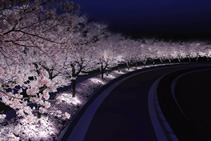
SAKURA STORY
An illumination event that took place March-April 2009 at the "Midtown Blossom 2009" event in Tokyo Midtown. In a roughly three-minute sequence, a story was told of the blooming of the sakura (cherry blossom) and the eventual falling of the petals, with the light shifting from the trees to the optical fiber petals on the ground.
Avoiding words that begin with "re"
In Japan today, fusion is the keyword for the design of clothes, products and architecture. For example, at Bicqlo (store combining Bic Camera and Uniqlo) clothes are sold alongside electrical appliances. And there are convenience stores where you can use ATMs or drink good coffee. In the past, such things were unthinkable. In order to have good fusion, one needs to forget about the designs made so far and start from zero.
To design for the future, one shouldn't use words that begin with "re" such as "redesign" or "recycle." One should avoid thinking about those concepts and start designing from scratch. Chairs have hardly changed shape compared to a hundred years ago. Neither have cars or architecture. When I look at the streets of Tokyo I sometimes think it's regrettable that there are so many parking facilities. Perhaps the problem lies in cars, not in architecture. Maybe in order to change the design of architecture, we need to first change the design of cars. That's the kind of thinking we need to do.
A marvelous item I purchased lately is "SIGMA dp1 Quattro." The design is a bit different from the usual digital camera, isn't it? Digital cameras look similar to old film cameras, but we should ask ourselves whether there needs to be a similarity. Perhaps cameras are easier to understand if they look the same, but it's dull to not try to be different.

SIGMA dp1 Quattro
A luxury compact digital camera with a distinctly horizontally long shape, fitted with high-performance lens and sensors. It won the Good Design Gold Award in 2014, and Germany's iF Design Gold Award in 2015.
A place to showcase Japanese culture and think about the future
A project I most want to do at the moment is to make a short film about 15 minutes long showing designs of the future - designs of everything from furniture to tableware, food, bathrooms and cars. In addition to this film which will use computer graphics, I wish to collaborate with various manufacturers to make prototypes, and then hold exhibitions. This project has already begun and we are doing a very futuristic thing with traditional companies in Japan and overseas.
We might see creation of new designs - such as cutlery that is like a hybrid between a fork and a pair of chopsticks, or plates and tables that disappear after being used. I cannot tell you the details yet, but we are planning to hold an exhibition in Paris in September at the "AD INTERIEURS 2015" held by AD Magazine.
It would be great if we could set up a showroom-like facility in Roppongi which would give people a taste of the future. By presenting possible future lifestyles in Japan and Japanese influences, it could be a place to contemplate future designs that have elements of traditional Japanese culture. It would be ideal if we could use rooms in a hotel or a condominium so that tourists from abroad could stay.
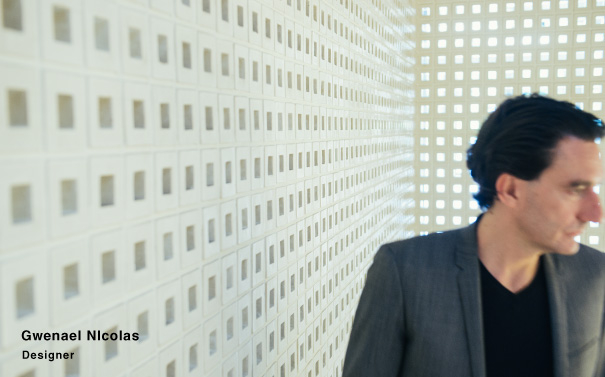
Working with influential creators
I came to Japan because I wanted to meet the opinion leaders who were creating Japan at that time. And I met Naoki Sakai-san and Issey Miyake-san. As I said earlier, Japan is ahead of the world by about five to ten years, and I felt that by working with such people, I would be able to understand and create the future. The things they make have an influence on things that come five to ten years later. For example, after Sakai-san designed the Olympus O-product, the design of digital cameras hasn't changed for more than a decade.
Other people who shape our times are Kenya Hara-san, Taku Satoh-san, Kashiwa Satoh-san, Masamichi Katayama-san, Yasumichi Morita-san, and the deign unit WOW...it's interesting how they all have different tastes, isn't it?
Designing things that go beyond the physical product
Having lived more than 20 years in Japan, I can say that this country has an awesome power. The designs made here are timeless. There is timelessness in the proportions and balance of things, and in the concepts. You can't tell whether something has been made in the past or recently. Things can be changed a little and made to look traditional or modern or futuristic. So designers in Japan don't have to work very hard - they have it easy and it's not fair. (laughs) In France, people don't have such tastes and they're continuing to make things that look showy and old.
When a stone is thrown into a pond, the Japanese look at the ripples made on the surface of the water. In other words, they appreciate the effect. The French, on the other hand, are interested in what exactly was thrown into the pond. Foreigners take good care of objects, but they don't look at the rest of the picture. I personally feel that the biggest beauty lies in the effects ... A long time ago, Taku Satoh-san designed a cellphone screen that lit up with a soft light. It became a much talked-about product in Japan and sold well, but people outside of Japan didn't get it. I think the marvelous thing about the Japanese is that they understand designs like that - designs that go beyond the physicality of the product.
"CURIOSITY ESSENCE", a perfume I designed was also about going beyond the physical product. The design for the bottle was also about time - capturing a moment in time. It doesn't look like a bottle at first glance, so people will think, "Ah, it's a water drop." I think these are the kind of designs that are needed now. We need designs that don't tire us out.

CURIOSITY ESSENCE
An original perfume made to commemorate Gwenael Nicolas's portfolio book of the same name. Blended by a young perfume creator, the bottle is handmade by Sugahara Glassworks. A total of 300 limited-edition bottles were made.
Turning the impossible into the possible
I think that Japanese craftsmanship is brilliant. We asked Sugahara Glassworks to make the bottles for CURIOSITY ESSENCE. We made a model with a 3D printer and showed it to them, and they said it wouldn't be possible to make the same thing from glass. Two months later, we received a telephone call and went to see what they had made. It turned out that they'd crafted bottles which were 100% what I had in mind. They had turned the impossible into the possible. What a terrific country Japan is, I thought. This was a dream I had long wanted to realize, and tears almost came to my eyes then.
Come to think of it, it's not about being Japanese or not - there really isn't anything that humans can't do, is there? In 1961, when President Kennedy said the U.S. would send a man to the moon, everyone thought, "It can't be done." Yet several years later, the goal was fulfilled. Of course, it must have been an extremely tough process, but I believe there really is nothing that we can't do.
Editor's thoughts
Nicolas-san's portfolio book "Curiosity Essence" was published recently. The photographs of the works, many of which are inspired by Japanese culture, are grouped under six concepts, and provide readers with a glimpse of his remarkable creativity. During the interview, Nicolas-san kept telling us, "The Japanese are great!" and I felt my motivation level being raised somewhat. (edit_kentaro inoue)


















